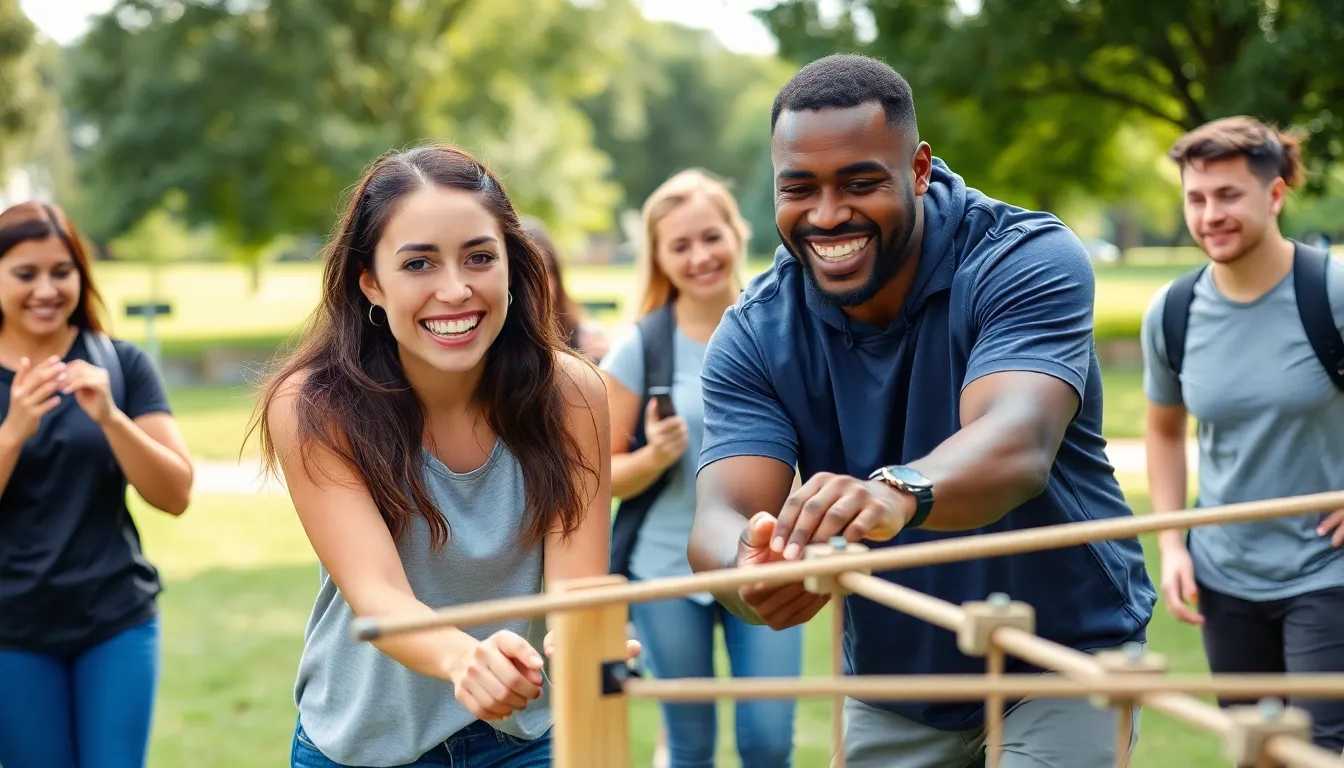In today’s fast-paced work environment, building a cohesive team isn’t just a nice-to-have; it’s essential for success. Simple team building activities can transform a group of individuals into a powerhouse of collaboration and creativity. Who knew that a little fun could lead to better communication and trust?
Table of Contents
ToggleImportance Of Simple Team Building Activities
Simple team-building activities play a crucial role in fostering a cohesive work environment. They boost morale among team members, enhancing their sense of belonging and purpose. Improved collaboration results from these activities, as individuals learn to communicate more effectively. Trust is built through shared experiences, allowing team members to rely on one another.
Engagement increases when teams participate in enjoyable activities. Such environments inspire creativity and innovation, leading to better problem-solving skills. Employees who feel connected to their colleagues show higher levels of productivity.
Effective communication stems from regular team-building exercises. Individuals become more open to feedback, which benefits overall team dynamics. Enhanced collaboration facilitates a smoother workflow, reducing misunderstandings and conflicts.
These activities also provide opportunities for leadership development. As team members step into various roles, they learn to adapt and grow. Skill enhancement occurs not only in interpersonal relations but also in task-related abilities. Performance improves when individuals feel supported by their teammates.
Organizations can see measurable benefits from investing in simple team-building activities. Increased job satisfaction contributes to employee retention rates. Simple interactions create lasting friendships, positively impacting workplace culture. Prioritizing this aspect of team dynamics proves beneficial for overall success.
Types Of Simple Team Building Activities


Simple team-building activities come in various forms, catering to diverse interests and settings. Engaging in these activities fosters collaboration and enhances interpersonal relationships.
Outdoor Activities
Outdoor activities boost team morale while promoting physical exercise. Participants in hiking or nature walks share experiences that strengthen bonds. Trust develops as teams navigate challenges together, like obstacle courses or scavenger hunts. Additionally, sports like soccer or volleyball foster a sense of camaraderie through friendly competition. These activities encourage communication and quick thinking, enhancing problem-solving skills within the team.
Indoor Activities
Indoor activities provide flexibility, especially in inclement weather or limited space. Options like escape room challenges require teamwork and strategic planning to solve puzzles. Trivia games stimulate collaboration and knowledge sharing, making learning enjoyable. Creative workshops, such as cooking classes or art sessions, allow team members to express themselves while working together. These engaging experiences promote open dialogue and strengthen team dynamics, contributing to an effective workplace culture.
Benefits Of Simple Team Building Activities
Simple team-building activities offer numerous advantages that strengthen the team’s overall performance. These activities create a foundation for effective communication and a collaborative environment.
Improved Communication
Effective communication becomes a key outcome of engaging in team-building exercises. Team members learn to express ideas clearly and listen to one another. During activities, individuals share experiences, fostering openness and trust. Enhanced communication reduces misunderstandings and simplifies feedback exchanges. Improved interaction leads to stronger relationships among colleagues. Consequently, this positive shift cultivates a more harmonious workplace atmosphere. In turn, increased comfort in communication drives innovation and creativity.
Enhanced Collaboration
Collaboration thrives in environments where team members engage in shared activities. Different perspectives emerge when individuals work together towards a common goal. Simple activities create opportunities for brainstorming and strategic planning. Diverse skillsets complement one another and inspire dynamic teamwork. Engaged teams develop a greater sense of unity through these collaborative efforts. Cohesion leads to better problem-solving abilities and resource utilization. Ultimately, enhanced collaboration results in improved project outcomes and team efficiency.
Tips For Organizing Simple Team Building Activities
Organizing effective team-building activities involves strategic planning and clear objectives. Setting clear goals aligns the team’s efforts and enhances engagement during the activities.
Setting Goals
Determining specific, measurable goals facilitates focused outcomes for team-building activities. Teams benefit from identifying objectives such as improving communication, fostering collaboration, or enhancing trust among members. Establishing expectations provides clarity for participants and enhances commitment. Goals should reflect the team’s current challenges and desired improvements, allowing members to work toward shared aspirations. Frequent reassessment of these goals ensures they adapt alongside team dynamics, allowing for continuous growth and better alignment with organizational success.
Choosing The Right Activities
Selecting suitable activities for the team requires consideration of preferences, team dynamics, and overall objectives. Diverse range of activities, including problem-solving games and creative workshops, can engage participants effectively. Activities should cater to varying skill levels and interests to ensure inclusivity. Avoiding overly complex tasks prevents frustration and promotes enthusiasm. Observing past team interactions offers valuable insights into what resonates most with members. Integrating both outdoor and indoor options ensures a balanced approach, fostering teamwork in various settings. Regularly soliciting feedback helps refine activity choices for optimal engagement and improved results.







